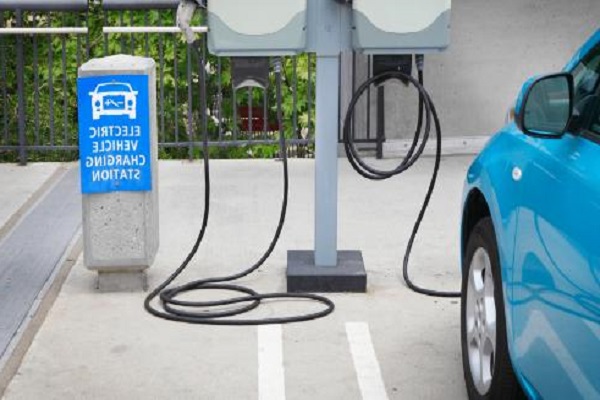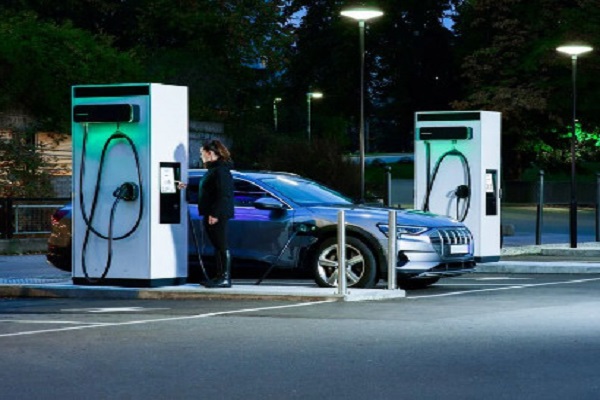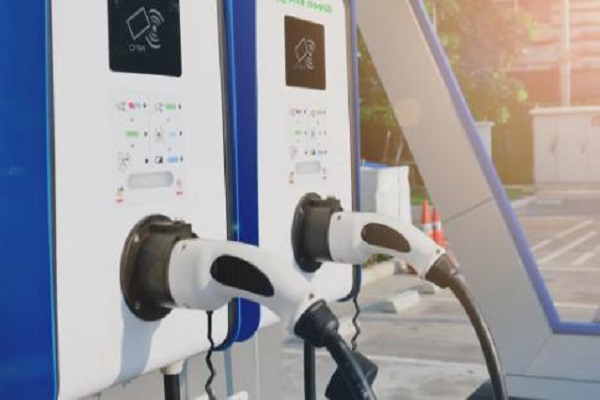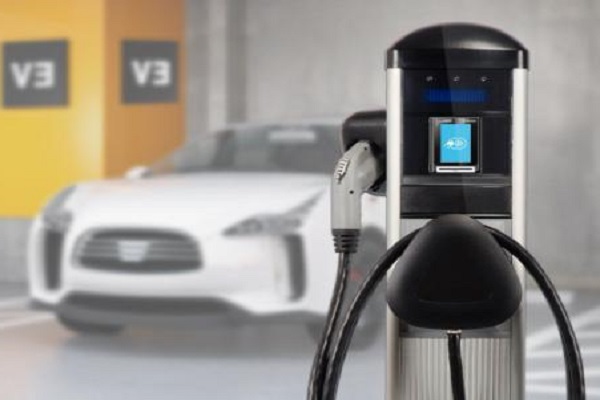Siemens Level 3 EV Charger: Powering Your Electric Journey
Siemens, a global leader in electrification, automation, and digitalization, offers Level 3 electric vehicle (EV) chargers that are designed to power your electric journey with reliability, efficiency, and innovation.
Introduction to Siemens Level 3 EV Chargers
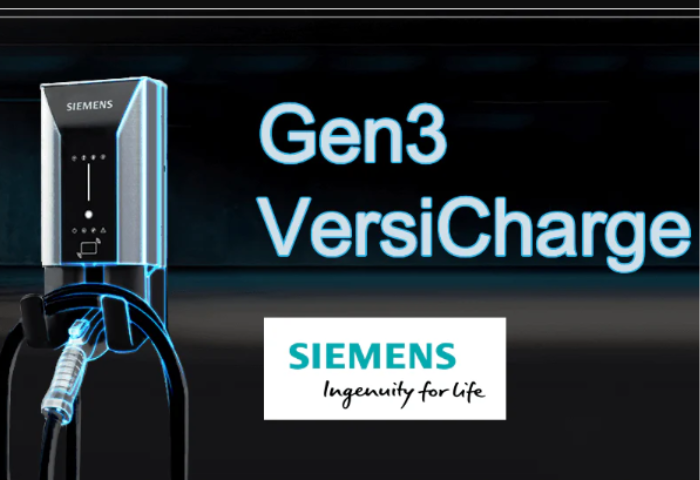
Overview of Siemens EV Charging Solutions
Siemens is a global technology company that offers a wide range of electric vehicle (EV) charging solutions, including Level 3 EV chargers designed to provide fast and convenient charging for electric vehicles. Here’s an overview of Siemens EV charging solutions, with a focus on Level 3 chargers:
Introduction to Siemens Level 3 EV Chargers
Fast Charging Capabilities:
Siemens Level 3 EV chargers, also known as DC fast chargers, are designed to deliver high-power charging to electric vehicles, enabling rapid recharging for drivers on the go. These chargers can provide significantly faster charging speeds compared to Level 1 and Level 2 chargers, making them ideal for long-distance travel and high-traffic locations.
High-Power Output:
Siemens Level 3 chargers are capable of delivering high-power outputs, typically ranging from 50 kW to 350 kW or more, depending on the model and configuration. High-power charging reduces charging time significantly, allowing EV drivers to add hundreds of miles of range in a matter of minutes, making long trips more convenient and practical.
Compatibility with CCS and CHAdeMO Standards:
Siemens Level 3 chargers are compatible with widely adopted charging standards, including the Combined Charging System (CCS) and CHAdeMO, ensuring interoperability with a broad range of electric vehicle models from various manufacturers. CCS and CHAdeMO connectors allow EV drivers to access fast charging infrastructure with ease and convenience.
Modular and Scalable Design:
Siemens Level 3 chargers feature a modular and scalable design, allowing for flexible deployment and expansion of charging infrastructure as demand grows. Charging stations can be configured with multiple charging points and power levels to accommodate different site requirements and user needs.
Smart Charging Capabilities:
Siemens EV charging solutions often incorporate smart charging features, such as remote monitoring, billing, and energy management capabilities. Integrated software platforms enable operators to monitor charging station performance, manage user access, and optimize charging schedules for efficient operation and cost-effective charging services.
Reliability and Durability:
Siemens is known for its reputation for quality and reliability in engineering and manufacturing. Siemens Level 3 EV chargers are designed and built to withstand harsh environmental conditions, ensuring durability and long-term performance in diverse operating environments, including outdoor and high-traffic locations.
Overview of Siemens EV Charging Solutions
Comprehensive Product Portfolio:
Siemens offers a comprehensive portfolio of EV charging solutions, including Level 1, Level 2, and Level 3 chargers for residential, commercial, and public charging applications. The product range includes wall-mounted chargers, pedestal chargers, charging stations with multiple ports, and high-power fast charging hubs.
End-to-End Solutions:
Siemens provides end-to-end EV charging solutions, encompassing hardware, software, and services to support the entire EV charging ecosystem. From charger design and manufacturing to installation, operation, and maintenance, Siemens offers integrated solutions tailored to the needs of charging network operators, utilities, fleet operators, and businesses.
Customization and Integration:
Siemens collaborates with customers to customize and integrate EV charging solutions into existing infrastructure and operations. Whether deploying charging infrastructure for commercial fleets, public transportation, retail centers, or municipal facilities, Siemens works closely with stakeholders to develop tailored solutions that meet specific requirements and objectives.
Future-Proofing and Scalability:
Siemens EV charging solutions are designed to be future-proofed and scalable, enabling seamless integration with emerging technologies, grid management systems, and renewable energy sources. Scalable charging infrastructure allows for incremental expansion and upgrades to meet growing demand and evolving industry standards.
Global Presence and Support:
With a global presence and extensive network of partners and service providers, Siemens offers localized support and technical expertise to customers worldwide. Whether deploying EV charging infrastructure in urban centers, remote locations, or industrial sites, Siemens provides comprehensive support throughout the project lifecycle, from planning and installation to operation and maintenance.
Benefits of Level 3 Charging
Level 3 EV chargers, also known as DC Fast Chargers, are revolutionizing the electric vehicle world by offering ultrafast charging times. While they might not be the perfect solution for every situation, Level 3 chargers provide a compelling set of advantages, especially for those who frequently travel long distances. Here’s a closer look at the key benefits of Level 3 charging:
Rapid Charging Speeds:
Level 3 chargers, also known as DC fast chargers, offer significantly faster charging speeds compared to Level 1 and Level 2 chargers. With high-power outputs ranging from 50 kW to 350 kW or more, Level 3 chargers can recharge electric vehicle batteries to 80% capacity in as little as 20-30 minutes, making long-distance travel more practical and convenient.
Convenience for On-the-Go Charging:
Level 3 chargers are designed for on-the-go charging at high-traffic locations such as highways, rest areas, and urban centers. Their fast charging speeds enable EV drivers to quickly top up their battery levels during long trips or when they’re away from home or workplace charging stations, minimizing downtime and reducing range anxiety.
Enhanced Accessibility and Flexibility:
The deployment of Level 3 charging infrastructure expands the accessibility and flexibility of electric vehicle charging, allowing drivers to access fast charging services at public charging stations, retail locations, parking facilities, and other convenient locations. Level 3 chargers complement Level 1 and Level 2 chargers by providing fast charging options for drivers with time-critical charging needs.
Support for Long-Distance Travel:
Level 3 chargers are essential for supporting long-distance travel and intercity commuting with electric vehicles. Their rapid charging speeds enable EV drivers to cover long distances without extended charging stops, facilitating efficient and seamless travel experiences comparable to traditional gasoline-powered vehicles.
Scalability and Future-Proofing:
Level 3 charging infrastructure is scalable and future-proofed to accommodate advancements in electric vehicle technology, battery technology, and charging standards. Charging stations can be upgraded with higher power outputs and additional charging ports to meet growing demand and support next-generation electric vehicles with larger battery capacities and faster charging capabilities.
Technical Specifications of Siemens Level 3 Chargers
Charging Power Output:
Siemens Level 3 chargers typically offer high-power charging outputs ranging from 50 kW to 350 kW or more, depending on the model and configuration. These chargers provide rapid charging speeds to quickly replenish electric vehicle batteries, enabling fast and efficient charging for drivers on the go.
Connector Compatibility:
Siemens Level 3 chargers are compatible with industry-standard charging connectors, including Combined Charging System (CCS) and CHAdeMO, ensuring interoperability with a wide range of electric vehicle models from various manufacturers. CCS and CHAdeMO connectors support rapid DC charging and are commonly used in fast charging infrastructure worldwide.
Modular and Scalable Design:
Siemens Level 3 chargers feature a modular and scalable design, allowing for flexible deployment and expansion of charging infrastructure as demand grows. Charging stations can be configured with multiple charging ports and power levels to accommodate different site requirements and user needs.
Comparison with Level 1 and Level 2 Chargers
Charging your electric vehicle (EV) doesn’t have to be a slow and time-consuming process. Understanding the different levels of EV chargers – Level 1, Level 2, and Level 3 – empowers you to choose the most suitable option for your needs. Let’s dive into the key differences between these charging levels.
Charging Speed:
Level 3 chargers offer significantly faster charging speeds compared to Level 1 and Level 2 chargers. While Level 1 chargers provide slow trickle charging (typically 2-5 miles of range per hour of charging), and Level 2 chargers offer moderate charging speeds (typically 10-30 miles of range per hour), Level 3 chargers can deliver rapid charging rates (up to several hundred miles of range per hour).
Application and Use Case:
Level 1 chargers are commonly used for residential charging and are suitable for overnight charging or topping up a vehicle’s battery during extended periods of parking. Level 2 chargers are ideal for workplace charging, public charging at retail locations, and home charging for drivers with longer daily commutes.
In contrast, Level 3 chargers are designed for fast charging at high-traffic locations such as highways, rest stops, and commercial charging hubs. They are intended for on-the-go charging during long trips or when drivers need to quickly recharge their vehicles while traveling.
Infrastructure Requirements:
Level 1 chargers require a standard household electrical outlet (120V AC) for charging and can be easily installed at home or in parking spaces with access to electrical power. Level 2 chargers require a dedicated charging station with a 240V AC supply and are typically installed in commercial, public, or workplace settings with higher charging power requirements.
Level 3 chargers, on the other hand, require specialized infrastructure with high-voltage DC power supply and may involve more complex installation and grid connection requirements. They are typically deployed at fast charging stations along highways, major travel routes, and urban centers to support long-distance travel and high-volume charging needs.
Installation and Setup
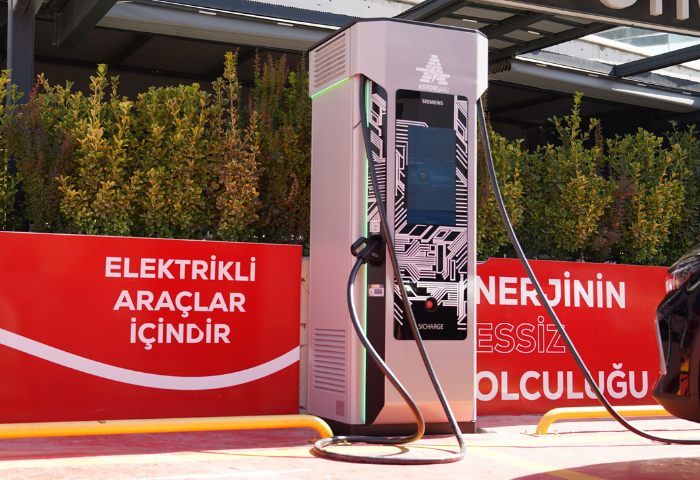
Site Requirements for Installation
Power Supply: The site should have access to an adequate power supply capable of supporting the charging station’s power requirements. Depending on the charger type and power output, this may involve upgrading existing electrical infrastructure or installing new power lines.
Space and Accessibility: Sufficient space should be available for installing the charging equipment, including clearance around the charger and access aisles for EVs. The site should be easily accessible to EV drivers and comply with local accessibility regulations.
Location: The location of the charging station should be strategically chosen to maximize visibility, convenience, and accessibility for users. Ideal locations include parking lots, garages, fueling stations, retail centers, workplaces, and public areas with high foot traffic.
Zoning and Land Use: Verify that the site complies with local zoning regulations, land use restrictions, and building codes governing the installation of EV charging infrastructure. Obtain any necessary permits or approvals from local authorities before proceeding with installation.
Infrastructure Compatibility: Ensure that the site’s electrical infrastructure is compatible with the selected charging equipment and installation requirements. Coordination with utility providers may be necessary to assess grid capacity, voltage levels, and connection points.
Installation Process
Site Assessment: Conduct a thorough site assessment to evaluate the feasibility of installation and identify any potential challenges or requirements.
Design and Planning: Develop a detailed installation plan, including charger placement, electrical layout, equipment specifications, and infrastructure requirements. Coordinate with electrical engineers, contractors, and relevant stakeholders to finalize the design.
Permitting and Approvals: Obtain permits and approvals from local authorities, zoning boards, building inspectors, and utility providers as required. Ensure compliance with regulatory requirements and obtain any necessary licenses or authorizations.
Electrical Installation: Install the necessary electrical infrastructure, including wiring, conduits, circuit breakers, and power distribution equipment, to connect the charging station to the grid. Work with licensed electricians and contractors to ensure proper installation and compliance with electrical codes.
Charger Installation: Mount the charging equipment, connect it to the electrical supply, and configure the charging settings according to manufacturer specifications. Conduct thorough testing and commissioning to verify functionality, safety, and performance.
Signage and Markings: Install signage, markings, and directional indicators to guide users to the charging station and provide instructions for safe and efficient use.
Training and Education: Provide training and education to site operators, maintenance personnel, and EV users on how to use the charging station safely and effectively.
Cost Factors and Budgeting
Equipment Costs: The cost of the charging equipment itself, including the charger unit, connectors, cables, and related accessories.
Installation Costs: Costs associated with site preparation, electrical infrastructure upgrades, labor, permitting, and professional services required for installation.
Power Supply Upgrades: Expenses for upgrading or expanding the site’s electrical infrastructure to accommodate the charging station’s power requirements.
Permitting and Compliance: Fees for obtaining permits, licenses, inspections, and compliance with regulatory requirements.
Maintenance and Support: Budget for ongoing maintenance, repairs, software updates, and technical support for the charging station over its lifecycle.
Operating Expenses: Electricity costs, network fees, transaction fees, and other operational expenses associated with operating the charging station.
Required Permits and Compliance
Building Permits: Obtain building permits from local authorities to authorize the construction or modification of structures associated with the charging station installation, such as mounting hardware, enclosures, and signage.
Electrical Permits: Secure electrical permits for wiring, circuit installation, and electrical work related to connecting the charging equipment to the grid. Ensure compliance with electrical codes and standards.
Zoning Approvals: Obtain zoning approvals, land use permits, or variances if the installation site is subject to zoning regulations or land use restrictions that may impact the installation.
Environmental Permits: Depending on the site’s location and environmental considerations, additional permits or approvals may be required to address environmental impact assessments, water runoff, or hazardous materials handling.
Accessibility Compliance: Ensure compliance with accessibility standards, such as the Americans with Disabilities Act (ADA), by providing accessible routes, parking spaces, signage, and amenities for disabled users.
User Interface and Operation
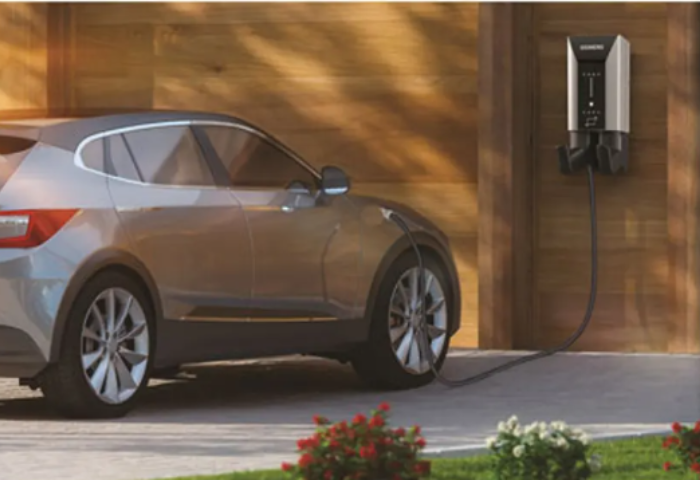
Step-by-Step Guide to Using Siemens Level 3 Chargers
Locate a charging station
Use a mobile app or navigation system to find nearby Siemens Level 3 charging stations. Alternatively, look for signage indicating the location of the charging station in parking lots, rest areas, or commercial facilities.
Approach the charging station
Drive your electric vehicle to the designated charging space or parking spot adjacent to the charging station. Ensure that your vehicle’s charging port is accessible and aligned with the charger connector.
Authenticate and initiate charging
If the charging station requires authentication, use an RFID card, smartphone app, or payment method to authenticate your user account and initiate the charging session.
Follow the on-screen instructions or prompts displayed on the charging station’s interface to select the desired charging parameters, such as charging power, session duration, or payment options.
Connect the charging cable
Open the charging port on your electric vehicle and insert the charging cable connector into the vehicle’s charging port. Ensure that the connector is securely inserted and locked in place to establish a stable connection.
Monitor the charging session:
Once the charging session is initiated, monitor the charging progress on the charging station’s display screen or through the mobile app. The display may show information such as charging status, power output, elapsed time, and estimated time to complete charging.
End the charging session
When the charging session is complete or you no longer need to charge your vehicle, use the charging station’s interface or mobile app to end the session and disconnect the charging cable from your vehicle.
Retrieve the charging receipt (optional):
If applicable, obtain a charging receipt or confirmation of the charging session for billing, reimbursement, or record-keeping purposes.
Vacate the charging space
Once the charging session is complete, vacate the charging space to allow other EV drivers to access the charging station.
Mobile App Integration and Features
Charger Locator: The mobile app may include a charger locator feature that enables users to find nearby Siemens Level 3 charging stations, view real-time availability, and receive navigation directions to the nearest charging point.
Authentication and Payment: Users can authenticate their charging sessions, monitor charging status, and make payments directly through the mobile app using RFID cards, account credentials, or digital payment methods.
Charging Session Management: The app allows users to remotely start, stop, and monitor charging sessions, adjust charging parameters, and receive notifications or alerts when charging is complete or if any issues arise during the session.
Billing and Transaction History: Users can access their charging transaction history, view billing details, and generate reports for accounting or reimbursement purposes.
User Profiles and Preferences: The app may support user profiles and preferences, allowing users to customize charging settings, save favorite locations, and set notifications for charging events or promotions.
Troubleshooting Common Issues
Check Connection: Ensure that the charging cable is securely connected to both the vehicle’s charging port and the charging station connector. If necessary, reseat the connector and try again.
Restart Charging Session: If the charging session fails to start or experiences interruptions, attempt to restart the session using the charging station’s interface or mobile app. Follow the on-screen instructions to troubleshoot any errors or prompts displayed.
Verify Power Supply: Confirm that the charging station is receiving power and operating correctly. Check for any visible signs of damage or malfunction, such as flickering lights or error codes on the display screen.
Contact Support: If troubleshooting efforts are unsuccessful, contact customer support or technical assistance for further assistance. Provide relevant details about the issue, including the charging station location, error messages, and vehicle information, to expedite the resolution process.
User Feedback and Ratings
User feedback and ratings provide valuable insights into the performance, reliability, and user experience of Siemens Level 3 chargers. Users can submit feedback and ratings through various channels, such as mobile apps, online portals, or customer service channels. Siemens may also collect feedback through surveys, focus groups, and user forums to identify areas for improvement and enhance product satisfaction. Monitoring user feedback allows Siemens to address issues promptly, implement enhancements, and maintain high-quality charging services for EV drivers.
Technical Features and Advancements
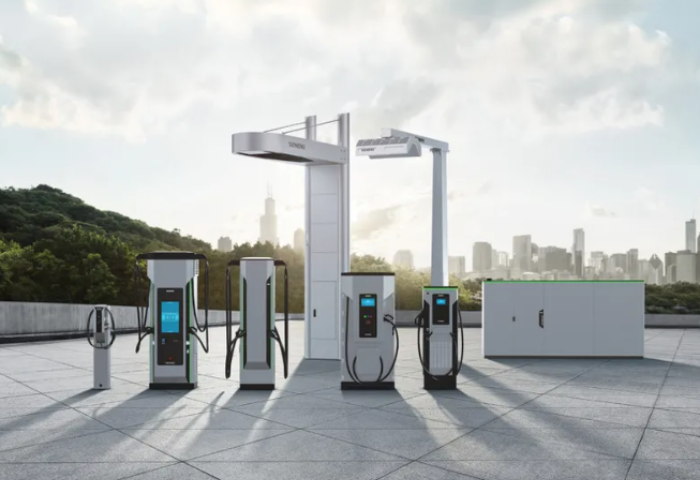
Charging Speed and Efficiency
Power Output: Siemens Level 3 chargers typically offer high-power outputs, ranging from 50 kW to 350 kW or more, depending on the model and configuration. Higher power outputs result in faster charging rates, allowing EV drivers to add significant range in a short amount of time.
Charging Protocol: Siemens chargers support industry-standard charging protocols such as the Combined Charging System (CCS) and CHAdeMO, enabling compatibility with a wide range of EV models. These protocols facilitate rapid DC charging, maximizing charging efficiency, and minimizing charging times for EV drivers.
Battery Management: Siemens chargers may incorporate advanced battery management features to optimize charging efficiency and protect the vehicle’s battery health. Smart charging algorithms adjust charging parameters dynamically based on battery state-of-charge, temperature, and other factors to ensure safe and efficient charging.
Cooling Systems: Some Siemens chargers are equipped with built-in cooling systems to manage heat generation during fast charging. Effective thermal management helps maintain optimal charging efficiency and prolongs the lifespan of the charging equipment and vehicle batteries.
Compatibility with EV Models
Charging Standards: Siemens chargers support industry-standard charging protocols such as the Combined Charging System (CCS) and CHAdeMO, which are widely adopted by electric vehicle manufacturers globally. CCS and CHAdeMO connectors are compatible with most electric vehicles on the market, allowing drivers to access charging infrastructure with ease.
Voltage and Power Requirements: Siemens chargers are engineered to meet the voltage and power requirements of electric vehicles, including high-voltage battery systems and fast charging capabilities. The chargers’ power output and charging profiles are optimized to accommodate different EV models and battery capacities, ensuring efficient and reliable charging performance.
Connector Types: Siemens chargers are equipped with connector types compatible with various electric vehicle models, including passenger cars, SUVs, trucks, and buses. The chargers may feature interchangeable connector options to accommodate different connector standards and vehicle configurations, enhancing charging versatility.
Software Updates: Siemens chargers may receive periodic software updates to ensure compatibility with new electric vehicle models, charging standards, and emerging technologies. Firmware updates and compatibility enhancements are deployed remotely to keep charging infrastructure up-to-date and compatible with evolving EV market trends.
Software Updates and Smart Charging
Firmware Updates: Siemens chargers receive periodic firmware updates to add new features, improve performance, address security vulnerabilities, and ensure compliance with industry standards and regulations. Firmware updates are deployed remotely over-the-air (OTA) or through network connections to keep charging infrastructure up-to-date and optimized.
Remote Monitoring and Management: Siemens chargers may feature remote monitoring and management capabilities, allowing operators to monitor charging station status, track usage metrics, and diagnose issues remotely. Cloud-based software platforms provide real-time insights, alerts, and analytics to optimize charging operations and minimize downtime.
Smart Charging Algorithms: Siemens chargers may employ smart charging algorithms to optimize charging parameters based on factors such as grid demand, electricity rates, renewable energy availability, and user preferences. Dynamic load management and demand response capabilities enable intelligent charging scheduling to balance grid load, reduce peak demand, and maximize energy efficiency.
Integration with Energy Management Systems: Siemens chargers may integrate with energy management systems, building automation systems, and smart grid infrastructure to enable seamless coordination of charging activities, demand response programs, and grid integration. Interoperability with energy storage systems and renewable energy sources enhances charging sustainability and grid stability.
Safety Features
Overcurrent Protection: Siemens chargers are equipped with overcurrent protection mechanisms to prevent damage to the charging equipment and the vehicle’s electrical system in the event of a power surge or electrical fault. Circuit breakers, fuses, and current-limiting devices help regulate current flow and protect against overloads.
Ground Fault Protection: Ground fault protection systems detect and interrupt electrical faults caused by ground faults or insulation failures, reducing the risk of electric shock hazards and ensuring user safety during charging sessions. Ground fault detection devices monitor current imbalances and trip the circuit if abnormalities are detected.
Temperature Monitoring: Siemens chargers may incorporate temperature monitoring sensors to measure ambient temperatures, charger temperatures, and battery temperatures during charging operations. Thermal management systems regulate heat dissipation, prevent overheating, and maintain safe operating temperatures for the charging equipment and connected vehicles.
Emergency Stop Button: Some Siemens chargers feature emergency stop buttons or safety interlocks that allow users to quickly halt charging operations in case of an emergency or safety concern. Pressing the emergency stop button activates a safety shutdown sequence, de-energizing the charger and disconnecting power to the vehicle.
Compliance with Standards: Siemens Level 3 chargers comply with industry standards and regulations governing electrical safety, electromagnetic compatibility (EMC), and environmental protection. Certification by regulatory bodies and third-party testing organizations ensures that chargers meet stringent safety requirements and performance standards.
Financial Considerations
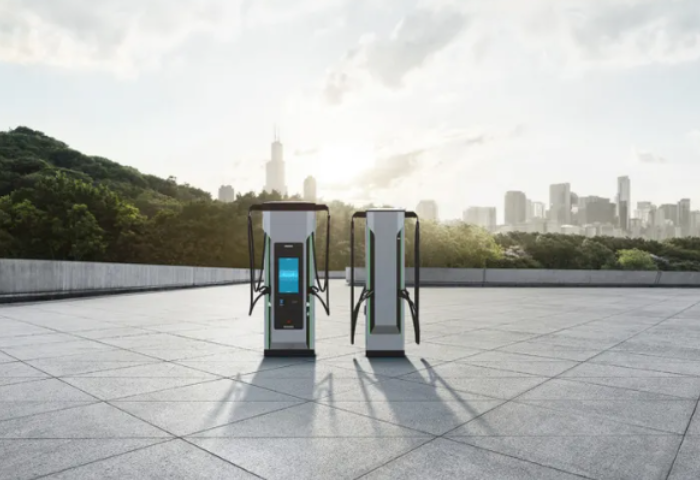
Cost of Ownership and ROI
Initial Investment: The upfront cost of purchasing and installing Siemens Level 3 chargers, including equipment costs, site preparation, electrical infrastructure upgrades, permits, and installation labor.
Operating Expenses: Ongoing expenses associated with operating and maintaining the charging infrastructure, such as electricity costs, network fees, maintenance, repairs, software updates, and technical support.
Revenue Generation: Potential revenue streams from charging fees, subscription services, network memberships, advertising partnerships, and value-added services offered to EV drivers and charging network operators.
Cost Savings: Potential cost savings and benefits resulting from reduced fuel expenses, lower vehicle operating costs, environmental incentives, tax credits, and grid integration programs.
ROI Calculation: Calculate the return on investment (ROI) for Siemens Level 3 chargers by comparing the total lifetime costs (initial investment + operating expenses) with the total lifetime benefits (revenue generation + cost savings). The ROI formula is: ROI = (Net Benefits / Total Costs) x 100%. A positive ROI indicates that the investment in charging infrastructure is financially viable and provides a satisfactory return.
Lifecycle Assessment: Conduct a lifecycle assessment to evaluate the long-term economic, environmental, and social impacts of owning and operating Siemens Level 3 chargers. Consider factors such as equipment lifespan, depreciation, salvage value, and total cost of ownership over the asset’s lifecycle.
Financing Options and Incentives
Financing Programs: Explore financing options such as loans, leases, equipment financing, or public-private partnerships to spread out the upfront costs of purchasing and installing charging infrastructure over time. Financing programs may offer competitive interest rates, flexible repayment terms, and deferred payment options to accommodate budget constraints.
Incentives and Rebates: Take advantage of government incentives, rebates, tax credits, grants, and subsidies available for EV charging infrastructure investments. These incentives may include federal, state, or local programs aimed at promoting electric vehicle adoption, reducing greenhouse gas emissions, and supporting sustainable transportation initiatives. Incentives can offset a portion of the upfront costs and improve the ROI for charging infrastructure projects.
Utility Programs: Partner with utility companies and energy providers to access incentive programs, demand response initiatives, and grid integration incentives for deploying charging infrastructure. Utility-sponsored programs may offer financial incentives, discounted electricity rates, or infrastructure support to encourage the adoption of electric vehicles and support grid modernization efforts.
Private Sector Partnerships: Collaborate with private sector stakeholders, such as automakers, retailers, property developers, and fleet operators, to explore joint financing arrangements, sponsorship opportunities, or revenue-sharing agreements for charging infrastructure projects. Private sector partnerships can leverage resources, expertise, and market reach to accelerate the deployment of charging infrastructure and maximize ROI.
Impact on Electricity Bills
Charging Frequency: The frequency and duration of charging sessions at Siemens Level 3 chargers affect electricity consumption and associated costs. High-volume charging locations with frequent usage may experience higher electricity bills compared to low-traffic sites.
Power Demand: The power output and charging speed of Siemens Level 3 chargers influence electricity demand and peak load requirements. Charging stations with higher power ratings consume more electricity per charging session, but they can accommodate more vehicles and charge them faster.
Electricity Rates: The cost of electricity, including energy charges, demand charges, and time-of-use rates, varies depending on the utility provider, location, and time of day. Charging infrastructure operators should analyze electricity rate structures and optimize charging schedules to minimize costs and avoid peak demand charges.
Load Management Strategies: Implement load management strategies, smart charging algorithms, and demand response programs to optimize electricity usage, balance grid load, and reduce peak demand. By scheduling charging sessions during off-peak hours or leveraging renewable energy sources, operators can lower electricity bills and improve cost-effectiveness.
Energy Efficiency Measures: Deploy energy-efficient charging equipment, LED lighting, HVAC systems, and other energy-saving technologies to minimize electricity consumption and enhance charging infrastructure sustainability. Energy efficiency measures help reduce operating expenses and improve the overall economic viability of charging stations.
Grants and Subsidies for EV Charging Infrastructure
Federal Grants: Federal agencies such as the Department of Energy (DOE), Environmental Protection Agency (EPA), Department of Transportation (DOT), and Federal Highway Administration (FHWA) offer grants, funding opportunities, and competitive programs to support EV charging infrastructure projects. Grants may cover equipment costs, installation expenses, and operational expenses for public charging stations, fleet electrification, and infrastructure deployment in underserved communities.
State Rebates and Incentives: Many states offer rebates, tax credits, grants, and incentive programs to encourage the installation of Siemens Level 3 chargers and electric vehicle charging infrastructure. State incentives may include rebates for charger purchases, installation incentives, sales tax exemptions, income tax credits, or utility rate discounts for charging infrastructure projects.
Utility Programs: Utility companies and energy providers administer incentive programs, rebates, and grants to support the deployment of EV charging infrastructure and promote electric vehicle adoption. Utility-sponsored initiatives may offer financial incentives, infrastructure grants, or technical assistance to help offset the costs of installing Siemens Level 3 chargers and supporting grid integration efforts.
Local Government Initiatives: Local governments, municipalities, and regional authorities administer grant programs, funding opportunities, and incentive schemes to encourage the deployment of electric vehicle charging infrastructure in communities. Grants may be available for public charging stations, workplace charging programs, multi-unit dwelling installations, and community charging hubs.
Public-Private Partnerships: Collaborate with public agencies, private sector stakeholders, nonprofit organizations, and community groups to leverage funding, resources, and expertise for charging infrastructure projects. Public-private partnerships can combine government grants, utility incentives, private investments, and philanthropic contributions to finance charging infrastructure deployment and maximize community benefits.
Market Comparison and Alternatives
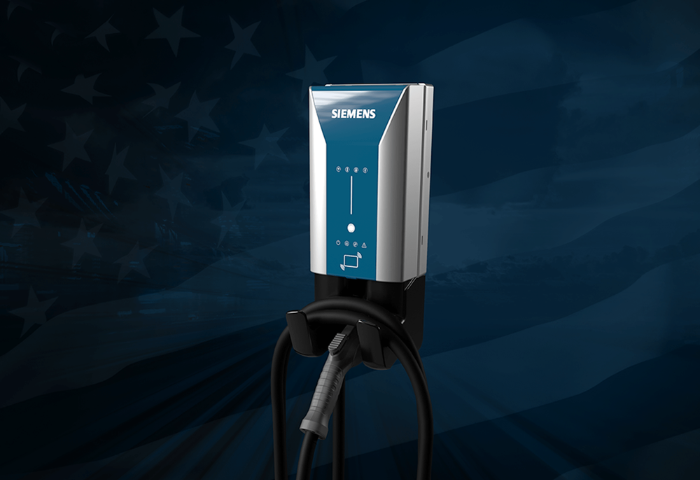
Siemens vs. Competitors in Level 3 Charging
Scalability and Customization:
Siemens offers a range of Level 3 charging solutions with scalable power outputs, modular designs, and customizable configurations to meet diverse customer needs and site requirements. Siemens chargers can be tailored to specific applications, deployment scenarios, and charging use cases, providing flexibility and versatility for charging infrastructure operators.
Interoperability and Compatibility:
Siemens Level 3 chargers support industry-standard charging protocols such as the Combined Charging System (CCS) and CHAdeMO, ensuring interoperability and compatibility with a wide range of electric vehicle models from various manufacturers. Siemens chargers are designed to be plug-and-play compatible with existing EV charging infrastructure, enabling seamless integration and easy adoption for EV drivers.
Reliability and Performance:
Siemens chargers are engineered for durability, reliability, and high-performance charging operations, backed by Siemens’ reputation for quality engineering and innovative technology solutions. Siemens Level 3 chargers undergo rigorous testing, certification, and quality control processes to ensure compliance with industry standards and customer expectations.
Network Management and Monitoring:
Siemens provides comprehensive network management and monitoring solutions for charging infrastructure operators, enabling real-time monitoring, remote diagnostics, and predictive maintenance of charging stations. Siemens chargers integrate with cloud-based software platforms, mobile apps, and backend systems to optimize charging operations, enhance the user experience, and maximize uptime.
Service and Support:
Siemens offers a range of service and support options for charging infrastructure operators, including installation assistance, technical support, maintenance services, and software updates. Siemens’ global network of service centers, field technicians, and authorized partners ensures timely response, resolution, and support for charging infrastructure deployments worldwide.
Emerging Trends in EV Charging Technology
High-Power Charging:
The trend towards higher-power charging solutions, such as ultra-fast chargers with power outputs exceeding 350 kW, enables rapid charging and reduces charging times for electric vehicles. Siemens continues to innovate and develop high-power charging solutions to support the growing demand for fast-charging infrastructure.
Bidirectional Charging:
Bidirectional charging technology, also known as vehicle-to-grid (V2G) or vehicle-to-home (V2H) charging, allows electric vehicles to serve as energy storage devices and supply power back to the grid or home during peak demand periods. Siemens may explore bidirectional charging capabilities in future charger designs to enable grid flexibility and energy management.
Wireless Charging:
Wireless charging technology, utilizing inductive or resonant charging methods, eliminates the need for physical cables and connectors, providing greater convenience and ease of use for electric vehicle owners. Siemens may develop wireless charging solutions for Level 3 chargers to expand charging options and enhance the user experience.
Smart Grid Integration:
Smart grid integration features, such as demand response, load management, and grid-balancing capabilities, enable charging infrastructure to communicate with utility networks and optimize charging operations based on grid conditions, electricity rates, and renewable energy availability. Siemens may enhance its Level 3 chargers with smart grid integration features to support grid modernization efforts and promote sustainable energy practices.
Energy Storage Integration:
Integration of energy storage systems, such as batteries or supercapacitors, with charging infrastructure allows for energy buffering, peak shaving, and grid stabilization functions, improving charging efficiency and grid reliability. Siemens may explore energy storage integration options for Level 3 chargers to enhance charging performance and grid resilience.
Brand Reputation and Reliability
Industry Experience: Siemens has extensive experience and expertise in developing innovative technology solutions for various industries, including transportation, energy, infrastructure, and automation. Siemens leverages its industry knowledge and insights to design and manufacture high-quality charging infrastructure solutions that meet customer needs and exceed industry standards.
Quality and Performance: Siemens chargers are known for their quality construction, reliability, and high-performance charging capabilities. Siemens employs stringent quality control processes, testing procedures, and certification standards to ensure that chargers meet or exceed regulatory requirements and customer expectations for safety, durability, and performance.
Global Reach: Siemens’ global footprint and network of subsidiaries, partners, and service centers provide comprehensive coverage and support for charging infrastructure deployments worldwide. Siemens’ presence in multiple markets enables it to understand local requirements, adapt to regional preferences, and provide tailored solutions that address specific customer needs and market demands.
Customer Satisfaction: Siemens prioritizes customer satisfaction and strives to deliver exceptional products, services, and support to its customers. Siemens’ commitment to customer-centricity, responsiveness, and continuous improvement fosters long-term relationships and loyalty among charging infrastructure operators, electric vehicle owners, and other stakeholders.
Customer Service and Support
Installation Assistance: Siemens offers installation assistance and technical guidance to help charging infrastructure operators plan, design, and deploy Level 3 charging stations effectively. Siemens’ team of experts provides support for site assessment, electrical design, equipment installation, commissioning, and project management throughout the deployment process.
Technical Support: Siemens provides technical support and troubleshooting assistance to address any issues, questions, or concerns related to Level 3 charging equipment, software, or operations. Siemens’ customer support team offers timely response, remote diagnostics, and on-site assistance to resolve technical issues and ensure optimal performance of the charging infrastructure.
Maintenance Services: Siemens offers maintenance services, repair services, and preventive maintenance programs to keep Level 3 charging stations operating reliably and efficiently. Siemens’ service technicians perform routine inspections, equipment checks, software updates, and component replacements to maintain charger functionality and minimize downtime.
Software Updates: Siemens provides regular software updates, firmware upgrades, and feature enhancements for Level 3 charging equipment to improve performance, add new capabilities, and address emerging requirements. Siemens’ software updates are deployed remotely over-the-air (OTA) or through network connections to keep charging infrastructure up-to-date and compatible with evolving standards and technologies.
Training and Education: Siemens offers training and education programs for charging infrastructure operators and maintenance personnel
Regulatory and Environmental Impact
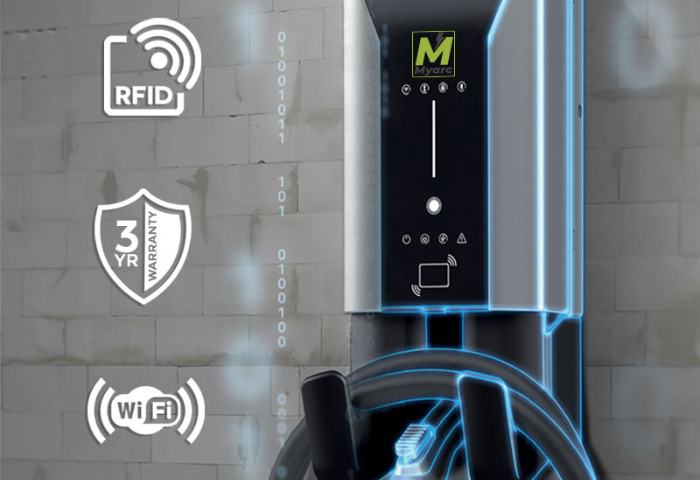
Emission Reduction and Environmental Benefits
Reduced Vehicle Emissions:
By facilitating the transition from conventional internal combustion engine vehicles to electric vehicles, Siemens Level 3 chargers help reduce tailpipe emissions of harmful pollutants such as carbon dioxide (CO2), nitrogen oxides (NOx), and particulate matter (PM). EVs produce zero tailpipe emissions during operation, resulting in cleaner air quality and improved public health outcomes.
Lower Carbon Footprint:
Electric vehicles charged using renewable energy sources, such as solar, wind, or hydroelectric power, have a significantly lower carbon footprint compared to gasoline or diesel-powered vehicles. Siemens chargers support the integration of renewable energy into the transportation sector, further reducing greenhouse gas emissions and mitigating climate change impacts.
Energy Efficiency:
Siemens Level 3 chargers are designed to be highly efficient, minimizing energy losses during the charging process and optimizing electricity usage. Advanced charging technologies, such as power factor correction, energy management algorithms, and thermal management systems, improve charging efficiency and reduce overall energy consumption, resulting in lower environmental impact.
Promotion of Sustainable Mobility:
Siemens chargers contribute to the development of sustainable mobility solutions by providing convenient, accessible, and reliable charging infrastructure for electric vehicles. Increased adoption of EVs supported by Siemens chargers reduces reliance on fossil fuels, promotes energy independence, and diversifies transportation fuels, leading to a more sustainable and resilient transportation system.
Regulatory Standards for EV Chargers
UL Standards:
Siemens chargers may be certified to UL (Underwriters Laboratories) standards, which ensure compliance with safety, performance, and environmental requirements for electrical products and components. UL certification provides assurance of product quality, reliability, and safety for charging infrastructure operators and EV owners.
NEC Requirements:
Siemens chargers adhere to the National Electrical Code (NEC) requirements, which specify installation guidelines, electrical safety standards, and wiring practices for charging equipment in various settings, including commercial, residential, and industrial applications. Compliance with NEC standards ensures the safeSiemens chargers may meet IEEE (Institute of Electrical and Electronics Engineers) standards, like IEEE 1547 for connecting distributed energy resources (DER) and IEEE 2030 for smart grid interoperability. This makes it easier for the chargers to work with the grid infrastructure and with other devices that are connected to it. and code-compliant installation of Level 3 chargers.
IEEE Standards:
Siemens chargers may comply with IEEE (Institute of Electrical and Electronics Engineers) standards, such as IEEE 1547 for distributed energy resources (DER) interconnection and IEEE 2030 for smart grid interoperability, to facilitate seamless integration with grid infrastructure and ensure interoperability with other grid-connected devices.
ISO Standards:
Siemens chargers may conform to International Organization for Standardization (ISO) standards, including ISO 15118 for electric vehicle communication and ISO 61851 for EV charging infrastructure, to establish common protocols, communication interfaces, and interoperability requirements for charging systems worldwide.
Industry Certifications:
Siemens chargers may hold additional industry certifications, such as CE (Conformité Européenne) marking for compliance with European Union (EU) directives, FCC (Federal Communications Commission) certification for electromagnetic compatibility (EMC), and RoHS (Restriction of Hazardous Substances) compliance for environmental sustainability.
Compliance with regulatory standards ensures that Siemens Level 3 chargers meet stringent safety, performance, and interoperability requirements, providing confidence and peace of mind to charging infrastructure operators, electric vehicle owners, and regulatory authorities.
Contribution to Electric Grid Stability
Demand Response:
Siemens chargers support demand response programs that allow grid operators to manage electricity demand dynamically by adjusting charging rates, schedules, and power consumption based on grid conditions, electricity prices, and system constraints. Demand response capabilities help balance supply and demand, reduce peak load, and optimize grid operations.
Grid Balancing:
Siemens chargers can participate in grid-balancing initiatives, such as frequency regulation, voltage control, and load management, to stabilize grid frequency, voltage levels, and power quality. Grid-balancing services provided by charging infrastructure help enhance grid stability, reliability, and resilience against fluctuations and disturbances.
Smart Charging:
Siemens chargers incorporate smart charging algorithms and energy management systems to optimize charging operations, minimize grid impacts, and maximize the utilization of renewable energy resources. Smart charging functionalities enable load shifting, peak shaving, and distributed energy management strategies to mitigate grid congestion and improve overall system efficiency.
Grid Integration:
Siemens chargers work well with communication networks, control systems, and the infrastructure of the grid. This lets energy flow in both directions, as well as interactions between the grid and vehicles (G2V and V2G). Grid-integrated charging infrastructure enhances grid flexibility, enhances renewable energy integration, and supports the transition to a decentralized, distributed energy system.
Life Cycle Analysis and Sustainability
Environmental Footprint:
Siemens assesses the environmental footprint of charging infrastructure, including manufacturing, transportation, installation, operation, maintenance, and end-of-life disposal. LCA considers factors such as energy consumption, greenhouse gas emissions, water usage, material sourcing, and waste generation to quantify the environmental impacts of charging infrastructure.
Resource Efficiency:
Siemens promotes resource efficiency and circular economy principles in the design, manufacturing, and operation of charging infrastructure, prioritizing the use of sustainable materials, energy-efficient technologies, and recyclable components. Siemens aims to minimize resource consumption, waste generation, and environmental degradation throughout the product life cycle.
Eco-Design Practices:
Siemens integrates eco-design practices, product stewardship, and environmental management systems into the development process of charging infrastructure to optimize sustainability performance and reduce environmental risks. Eco-design principles focus on minimizing environmental impacts, maximizing energy efficiency, and enhancing product recyclability and reusability.
Sustainable Supply Chain:
Siemens collaborates with suppliers, partners, and stakeholders to promote sustainability across the supply chain, from raw material extraction to product manufacturing and distribution. Siemens works with suppliers to ensure compliance with environmental regulations, ethical sourcing practices, and responsible procurement standards to minimize environmental and social risks.
Continuous Improvement:
Siemens is committed to continuous improvement and innovation in sustainability practices, seeking opportunities to enhance environmental performance, reduce carbon emissions, and promote sustainable development. Siemens engages in research, development, and innovation initiatives to advance sustainable technologies, improve product efficiency, and address emerging environmental challenges.
Integration with Renewable Energy Systems
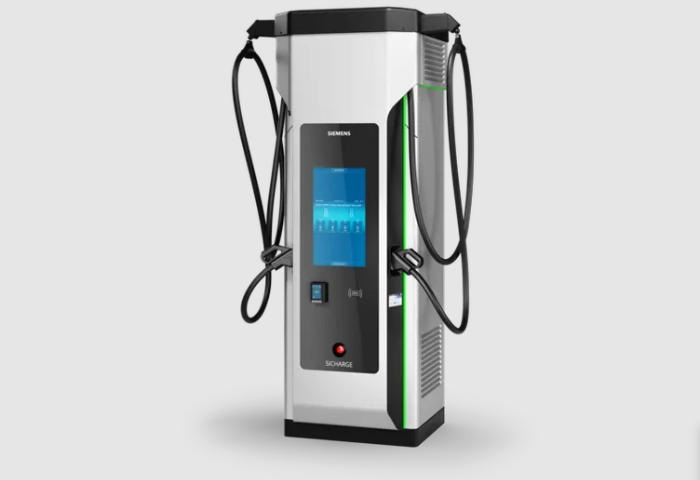
Pairing with Solar Power
Renewable Energy Integration: Solar power systems generate clean, renewable electricity from sunlight, reducing reliance on fossil fuels and mitigating greenhouse gas emissions associated with charging electric vehicles. By utilizing solar energy to power Level 3 chargers, Siemens contributes to environmental sustainability and supports the transition to a low-carbon energy system.
Cost Savings: Solar-powered charging stations can reduce electricity costs by offsetting grid electricity consumption with onsite solar generation. Siemens Level 3 chargers paired with solar power benefit from lower operating expenses, reduced electricity bills, and potential financial incentives such as net metering credits or renewable energy certificates (RECs).
Grid Independence: Solar-powered charging infrastructure enhances grid independence and resilience by reducing dependence on grid electricity and providing backup power during grid outages or emergencies. Siemens Level 3 chargers equipped with solar panels and energy storage systems enable off-grid operation and ensure continuous charging availability, even in remote or off-grid locations.
Environmental Stewardship: Pairing Level 3 chargers with solar power aligns with Siemens’ commitment to environmental stewardship and sustainable energy practices. Solar energy is abundant, renewable, and environmentally friendly, offering a clean and sustainable power source for electric vehicle charging infrastructure.
Energy Storage and Backup Solutions
Backup Power: Energy storage systems serve as backup power sources for Level 3 chargers during grid outages or disruptions, ensuring uninterrupted charging availability for electric vehicles. Siemens chargers equipped with energy storage provide reliability and resilience in emergency situations, such as natural disasters or power failures.
Demand Response: Energy storage enables demand response capabilities for Level 3 chargers, allowing operators to manage electricity demand, reduce peak load, and optimize grid operations. Siemens chargers with energy storage support load shifting, peak shaving, and grid-balancing strategies to enhance grid stability and efficiency.
Grid Support: Energy storage systems integrated with Level 3 chargers provide grid support services, such as frequency regulation, voltage control, and reactive power compensation, to improve grid stability and reliability. Siemens chargers with energy storage contribute to grid modernization efforts, renewable energy integration, and grid resilience against fluctuations and disturbances.
Renewable Integration: Energy storage facilitates the integration of renewable energy sources, such as solar and wind power, into electric vehicle charging infrastructure. Siemens chargers paired with energy storage enable the storage of excess renewable energy for later use, maximizing self-consumption, optimizing energy utilization, and reducing reliance on grid electricity.
Smart Grid Compatibility
Grid Communication: Siemens chargers communicate with grid operators, energy management systems, and grid control devices using standard communication protocols such as Open Charge Point Protocol (OCPP), Modbus, or TCP/IP. Grid communication capabilities enable remote monitoring, control, and management of charging infrastructure to optimize grid interactions.
Demand Response: Siemens chargers support demand response programs that allow grid operators to adjust charging rates, schedules, and power consumption based on grid conditions, electricity prices, and system constraints. Demand response functionalities enable Siemens chargers to participate in grid-balancing initiatives and provide grid support services as needed.
Load Management: Siemens chargers incorporate load management features to distribute charging loads, minimize peak demand, and optimize energy utilization based on grid constraints and user preferences. Load management algorithms adjust charging parameters dynamically to balance grid load, reduce stress on distribution infrastructure, and improve overall grid reliability.
Smart Charging: Siemens chargers employ smart charging algorithms and energy management systems to optimize charging operations, minimize grid impacts, and maximize the utilization of renewable energy resources. Smart charging functionalities enable Siemens chargers to schedule charging sessions, adjust power levels, and prioritize charging based on user requirements and grid conditions.
Green Certifications
LEED Certification: Siemens charging infrastructure may contribute to Leadership in Energy and Environmental Design (LEED) certification for green building projects, sustainable developments, and eco-friendly facilities. LEED certification recognizes the environmentally responsible design, construction, and operation of buildings and infrastructure.
ENERGY STAR: Siemens chargers may be ENERGY STAR certified for energy efficiency, indicating that they meet or exceed energy performance criteria set by the U.S. Environmental Protection Agency (EPA). ENERGY STAR certification signifies energy savings, reduced electricity consumption, and environmental benefits for electric vehicle charging infrastructure.
Green Building Standards: Siemens charging infrastructure may comply with green building standards such as the International Green Construction Code (IgCC), Green Globes, or Building Research Establishment Environmental Assessment Method (BREEAM), which promote sustainable building practices, resource efficiency, and environmental stewardship.
Carbon Neutrality: Siemens may offset carbon emissions associated with charging infrastructure through carbon offset programs, renewable energy purchases, or carbon reduction initiatives. Carbon neutrality initiatives demonstrate Siemens’ commitment to environmental sustainability and climate action by mitigating greenhouse gas emissions and supporting charging efforts.
Future Outlook and Innovations
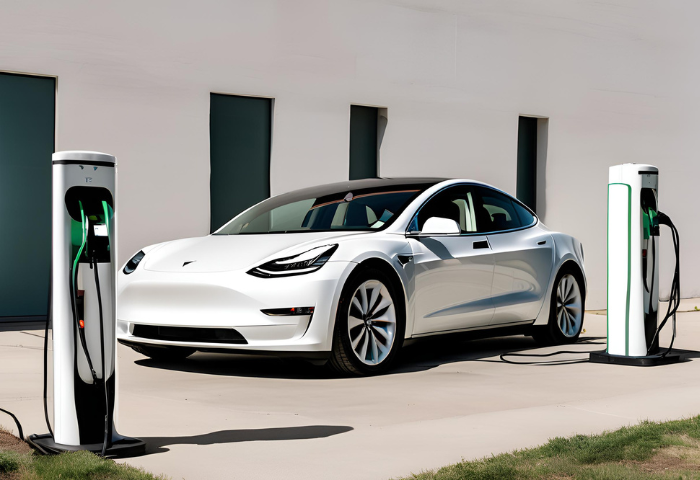
Increased charging speeds:
Advancements in fast charging technology are focused on further increasing charging speeds to reduce charging times and improve the convenience of electric vehicle ownership. Manufacturers are developing higher-power chargers capable of delivering ultra-fast charging rates exceeding 350 kW, enabling EVs to add significant range in a matter of minutes.
High-Power Charging Networks:
The expansion of high-power charging networks, such as those utilizing 350 kW chargers, will facilitate long-distance travel and support the adoption of electric vehicles for intercity and interstate journeys. These networks will offer seamless connectivity, reliable service, and fast charging options along major transportation corridors, reducing range anxiety and enhancing EV accessibility.
Liquid-Cooled Charging Infrastructure:
Liquid-cooled charging cables, connectors, and infrastructure components are being developed to manage heat dissipation and enable continuous operation at high charging rates. Liquid cooling technology enhances the reliability, durability, and safety of fast charging systems, ensuring optimal performance and longevity of charging infrastructure.
Battery technology advancements:
Innovations in battery technology, such as higher energy density, faster charging capabilities, and improved thermal management, will complement fast charging infrastructure by enabling EVs to accept higher charging rates without compromising battery life or safety. Next-generation battery chemistries, solid-state batteries, and advanced thermal management systems will enhance the compatibility and efficiency of fast charging.
Vehicle-to-Grid Integration:
Future fast charging systems may incorporate vehicle-to-grid (V2G) capabilities, allowing EVs to serve as mobile energy storage units and participate in grid services such as demand response, frequency regulation, and peak shaving. V2G integration enhances grid flexibility, supports renewable energy integration, and provides additional revenue streams for EV owners.
Bidirectional Charging:
Bidirectional charging technology enables EVs to discharge stored energy back to the grid or power external loads, opening up new opportunities for grid support, energy arbitrage, and backup power applications. Fast charging systems with bidirectional capabilities offer flexibility, resilience, and energy independence for EV owners and grid operators.
Smart Charging Infrastructure:
The integration of smart grid technologies, artificial intelligence (AI), and cloud-based software platforms into fast charging infrastructure enables dynamic load management, predictive maintenance, and personalized charging experiences. Smart charging systems optimize energy usage, minimize grid impacts, and enhance user convenience through real-time monitoring and control.
Modular and Scalable Designs:
Fast charging systems with modular and scalable designs allow for flexible deployment, easy expansion, and cost-effective upgrades to meet evolving market demands. Modular architectures enable charging infrastructure operators to customize charging stations, add additional charging ports, and adapt to changing power requirements without significant infrastructure investments.
Siemens Level 3 EV chargers are part of the company’s broader portfolio of electrification solutions aimed at accelerating the adoption of electric mobility and driving the transition to a sustainable energy future. By providing reliable, high-performance charging infrastructure, Siemens empowers individuals, businesses, and communities to embrace electric vehicles and contribute to a cleaner, greener transportation ecosystem.

Henry Michael is a leading expert in EV charging station research, specializing in innovative solutions for electric vehicle infrastructure. With a passion for sustainability and technological advancement, he is dedicated to advancing the accessibility and efficiency of EV charging worldwide.

